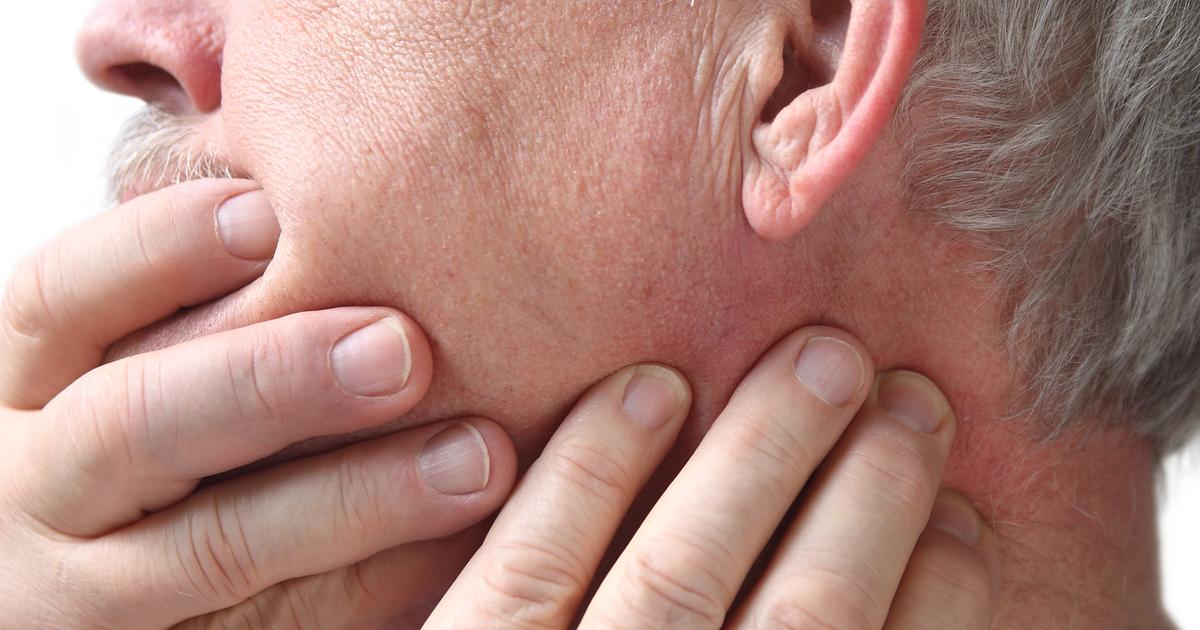15 Unexpected Signs Your Body Might Be Battling Parkinson's Disease
Parkinson's disease is a prevalent neurological movement disorder that arises from a deficiency in dopamine, a critical neurotransmitter that facilitates communication between nerve cells in the brain. This deficiency can result from genetic predisposition, environmental toxin exposure, or idiopathic causes. Parkinson's is more common in men than women and primarily affects individuals over the age of 60. While there is no known cure for the condition, early detection and a tailored treatment plan—including physical and neurological examinations, imaging techniques such as MRI, fMRI, PET, and DaTscan, and trial medications — can significantly alleviate symptoms and improve quality of life. Beyond the commonly recognized motor symptoms, Parkinson’s disease can present with a range of unexpected signs that are crucial for early identification and intervention. We've expanded our list to delve into 15 lesser-known symptoms of Parkinson’s disease that should never be overlooked.
1. Tremors

A tremor is an uncontrollable and unintentional movement in a rhythmic motion of one limb or one part of an individual's body. Muscle twitches and muscle spasms are not the same symptoms as a tremor. An involuntary contraction of a muscle is a muscle spasm, and the uncontrolled movement of a small region of a muscle is referred to as a muscle twitch. Two different types of tremors may occur. Resting tremor occurs when an individual is at rest, and an action tremor occurs during targeted movements. The most common category of tremors to occur in Parkinson's disease patients is referred to as a parkinsonian tremor. Parkinsonian tremor is one caused by damage to the section of the individual's brain responsible for the control of movements. Parkinsonian tremor is considered to be a resting tremor and typically initiates on one side or in one limb of a patient's body. Eventually, the tremor moves to the other limbs or side of the body as Parkinson's disease progresses.
2. Muscle Stiffness

Muscle stiffness and rigidity are terms used to describe when an individual has difficulty moving their muscles after rest and has a tight feeling in their muscles. Muscle stiffness is commonly accompanied by muscle cramping, muscle pains, and muscle discomfort. In Parkinson's disease patients, muscle stiffness can be unilateral or bilateral. Muscle stiffness can also result in a moderately reduced range of motion. A common characteristic seen in individuals affected by Parkinson's disease is a decreased arm swing when walking caused by muscle stiffness. Facial masking is also a common occurrence in affected individuals, where the stiffness of the facial muscles produces a mask-like appearance. A patient with this symptom may also find it challenging to pivot or turn when they are getting out of a sitting position or walking. Muscle stiffness is one of the three main signs a physician will look for in a patient to make a diagnosis of Parkinson's disease. Between ninety and ninety-nine percent of all Parkinson's disease patients experience muscle stiffness.
3. Balance Issues

A balance issue is a term used to refer to any problem that causes an individual to feel unsteady, dizzy, lightheaded, or like the room they are in is spinning. Balance problems can occur when individuals are sitting down, standing, or lying down. An individual's balance is maintained through the careful coordination of numerous systems in the body working together. The nerves, inner ear balance organs, bones, joints, muscles, blood vessels, bones, heart, and vision must all be working well and in sync to produce adequate balance in an individual. The organ in the inner ear and all of its components make up an individual's vestibular system, which is responsible for keeping them balanced. However, the nerves that send signals from the inner ear to the brain and vice versa may become affected by the degeneration process that occurs as a result of Parkinson's disease, which is what causes patients to have balance issues.
4. Changes In Speech

Individuals affected by Parkinson's disease tend to speak in a single tone without much emotion. Patients may speak very quietly, trail off at the end of a sentence, slur their words, or mumble. An individual who has Parkinson's disease may have speech with a hoarse or breathy sound to it, and they may stammer or stutter when they speak. The motor symptoms associated with Parkinson's disease can cause an individual to send inappropriate non-verbal cues or cause difficulty with their expression of emotions. The symptoms not involved with motor skills in Parkinson's disease patients, such as cognitive problems, can cause changes to their speech. An individual affected by Parkinson's disease may find it challenging to find and form the right words to express what they want to say.
5. Movements Slow Down

The slowness of movement, bradykinesia, is one of the three hallmark symptoms a physician looks for when making a diagnosis of Parkinson's disease. An individual who has Parkinson's disease may experience a decrease in the speed of their automatic movements, such as swinging of the arms when walking and blinking their eyes. Another issue that occurs in patients as a result of bradykinesia is problems with the initiation of movement, like when the individual is attempting to get up from a seated position. The slowness of movement may also manifest as an abnormal stillness in the patient's face or a reduction in their facial expressions. Everyday functions are often impacted by bradykinesia, such as brushing the teeth, cutting up food, pouring a glass of milk, or buttoning a shirt. The slowness of movement tends to occur unpredictably. One minute an affected individual can move with ease, and the next minute they may require help performing basic everyday tasks.
6. Impaired Posture

One of the most common hallmark symptoms of Parkinson's disease is impaired posture. An individual with Parkinson's disease will often have an increasingly stooped posture that causes their shoulders to hunch forward, rather than being aligned with their hips and feet. The cause of the posture is an increase in muscle stiffness or rigidity. Parkinsonian posture tends to include rounded shoulders, a head positioned forward, increased trunk flexion, and bent knees. Posture can affect a patient's ability to speak loudly and clearly, ability to move their upper extremities and neck, perception of where their body is in the space around them, balance, postural muscle strength, and ability to swallow. Some individuals also experience headaches and pain in their jaw joints. Certain stretching and strengthening exercises can be used to help correct posture. A physical therapist may be able to recommend a routine that's best for each patient.
7. Issues Writing

Parkinson's disease can sometimes lead to issues writing, particularly with handwriting. Patients who experience a condition called freezing of gait might also have the same problems with writing. This is a motor issue that exists outside the typical gait freezing episodes. Handwriting is considered a sequential movement, which requires a specific type of motor function. This means patients who experience freezing of gait might be more likely to have handwriting impairment than patients who don't. Patients with Parkinson's disease might find that they have a decreased ability to print or to write in cursive. In one study, Parkinson's patients who have freezing of gait struggled with all forms of handwriting, but they had the most trouble when they were supposed to alternate handwriting sizes rather than shaping the letters at one continuous size. The same study showed Parkinson's disease patients without freezing of gait did experience some handwriting difficulty, but not to the same extent as those who had freezing of gait. Individuals might experience something called micrographia, which causes handwriting to be abnormally small and cramped due to a neurodegenerative disorder.
8. Loss Of Ability To Smell

Losing the ability to smell is not always an indicator of Parkinson's disease, and it could be indicative of several things. With that said, the majority of individuals with Parkinson's disease have lost some sense of smell. Hyposmia, the medical term for a reduced sense of smell, can often be pinpointed as an early sign of Parkinson's disease. Some patients can pinpoint their loss of smell as having started several years before their Parkinson's disease diagnosis. However, since the loss of the sense of smell is so gradual, and because we do not often pay much active attention to what we are smelling, many individuals do not notice it right away. Patients are unlikely to report it, and doctors don't often ask about it. One way to check for hyposmia is by smelling licorice, pickles, bananas, or other foods with strong odors. If individuals have trouble identifying the scents, they should talk to a doctor.
9. Issues with Sleep

Issues with sleep can sometimes be an early sign of Parkinson's disease. With that said, many other conditions can lead to sleep problems. Some individuals find they experience sleep issues before they note any motor control issues. Because doctors tend not to consider Parkinson's disease until motor symptoms begin, this might not always aid in early diagnosis. Several different sleep issues often occur in Parkinson's disease patients. Some experience insomnia, nightmares, and excessive sleepiness during the day. 'Sleep attacks' are also possible, which are episodes in which someone involuntarily falls asleep. REM sleep behavioral disorders may occur, and these can cause patients to act out their dreams because their bodies aren't paralyzed during sleep. Restless legs syndrome and periodic leg movement disorder are also common, as is sleep apnea, a condition that causes individuals to stop breathing intermittently during the night. Some patients report nocturia, which is a frequent need to get up and urinate during the night. Studies have also found associations between Parkinson's disease and narcolepsy.
10. Constipation

The majority of cases of constipation are related to dehydration or to not having enough dietary fiber, but it can also sometimes be a sign of Parkinson's disease, particularly when it is ongoing. Constipation occurs when there's an increased amount of time between bowel movements, and when stool becomes more difficult to pass, even though individuals haven't made any significant changes to their diet or the amount of liquid they drink. Some Parkinson's disease patients experience constipation because the autonomic nervous system functions improperly. This part of the nervous system helps regulate the activity of the smooth muscles in the intestinal tract. If the intestinal muscles aren't working as effectively as they should be, it can lead to constipation. There are also some medications to treat Parkinson's disease that can cause constipation. In these cases, the constipation is a side effect of the treatment rather than an underlying symptom of illness.
11. Mood and Anxiety Disorders

Mood disorders, such as depression, anxiety, or apathy, can be early and often unexpected signs of Parkinson’s disease. These symptoms frequently precede motor issues, making them an overlooked aspect of the condition. The brain’s dopamine levels, which are central to reward and pleasure systems, are significantly affected in Parkinson’s. This disruption can cause patients to feel inexplicably sad, anxious, or disinterested in activities they once enjoyed. Apathy, in particular, can manifest as a lack of motivation or enthusiasm, leading to social withdrawal or reduced engagement in daily life. These mood changes are not merely emotional responses to the diagnosis but rather intrinsic symptoms of the disease’s effect on brain function. Early recognition and management through counseling, medication, or lifestyle adjustments can significantly improve quality of life. Addressing mental health is vital, as these disorders can compound the challenges posed by the motor symptoms of Parkinson’s disease.
12. Vision Problems

Vision issues are an unexpected yet common non-motor symptom of Parkinson’s disease. Patients may experience blurred vision, difficulty reading, or trouble judging distances. These problems arise due to the effect of Parkinson’s on dopamine levels, which play a role in visual processing and eye movement coordination. Reduced blinking, a hallmark of Parkinson’s, can lead to dry eyes, causing irritation and blurred vision. Additionally, patients may find it hard to track moving objects or shift their gaze smoothly, affecting their ability to drive or perform other visually demanding tasks. Depth perception can also be impaired, leading to difficulties navigating stairs or uneven terrain. Recognizing vision problems as part of Parkinson’s is crucial for early intervention. Treatment options include lubricating eye drops, vision therapy, or consultations with an ophthalmologist. Addressing these issues can enhance safety and overall quality of life for individuals with Parkinson’s disease.
13. Excessive Sweating or Seborrheic Dermatitis

Excessive sweating and seborrheic dermatitis are lesser-known symptoms of Parkinson’s disease. The condition’s impact on the autonomic nervous system can lead to episodes of unexplained, excessive sweating, particularly on the hands, feet, or face. This can occur even in cool environments or during minimal physical exertion. In addition, many patients develop seborrheic dermatitis, characterized by oily skin, redness, and flaky patches, most commonly on the scalp, face, or upper chest. These skin changes result from increased activity of the sebaceous (oil) glands, likely linked to altered dopamine signaling. Both symptoms can cause discomfort, self-consciousness, and a diminished quality of life. Management strategies include using antiperspirants, medicated shampoos, or topical treatments for seborrheic dermatitis. Dermatologists and neurologists can collaborate to address these symptoms effectively. Recognizing and treating these skin-related issues can significantly improve comfort and confidence for individuals living with Parkinson’s disease.
14. Urinary Problems

Urinary issues are a frequently overlooked symptom of Parkinson’s disease. They stem from the condition’s impact on the autonomic nervous system, which controls involuntary bodily functions. Common urinary problems include increased urgency, frequency, or difficulty starting urination. Some patients may also experience nocturia (frequent nighttime urination), which disrupts sleep and contributes to fatigue. These symptoms occur because Parkinson’s affects the nerve pathways responsible for bladder control, leading to overactive or poorly coordinated bladder muscles. While these issues may initially seem unrelated to Parkinson’s, they can significantly impact daily life, leading to discomfort and reduced confidence. Management options include pelvic floor exercises, medications to relax the bladder, and lifestyle modifications, such as fluid management. Consulting with a urologist or a specialist in autonomic disorders can help tailor treatment to the individual’s needs. Addressing urinary problems early can enhance comfort and independence for those with Parkinson’s disease.
15. Fatigue and Low Energy

Fatigue is a pervasive but often underappreciated symptom of Parkinson’s disease. Unlike typical tiredness, this fatigue is chronic and not necessarily related to physical exertion. It can feel like an overwhelming lack of energy that makes even simple tasks seem insurmountable. This symptom results from the disease’s impact on brain chemistry, particularly dopamine regulation, which affects both motor and non-motor functions. Sleep disturbances, depression, and the physical strain of managing motor symptoms can exacerbate fatigue. Patients may feel a constant need to rest, limiting their ability to engage in social, recreational, or occupational activities. Addressing fatigue requires a holistic approach, including optimizing medication schedules, improving sleep hygiene, and incorporating regular, moderate exercise. Counseling or support groups can also help patients cope with the emotional toll of fatigue. Recognizing and managing this symptom is essential for maintaining quality of life and independence in Parkinson’s disease.
Recognizing the Unexpected in Parkinson's Disease

Parkinson’s disease presents a complex mix of motor and non-motor symptoms, affecting both physical and emotional well-being. From tremors and muscle stiffness to unexpected signs like fatigue, mood changes, and vision problems, the condition impacts every aspect of life. While Parkinson’s currently has no cure, early diagnosis and a comprehensive treatment plan—including medication, therapy, and lifestyle adjustments—can greatly improve symptom management and overall quality of life. Research continues to advance, offering hope for new treatments and better outcomes. It’s crucial for patients, caregivers, and healthcare providers to recognize and address both the expected and lesser-known symptoms to ensure holistic care. Education, support networks, and a proactive approach are key to navigating the journey with Parkinson’s. By understanding the disease’s multifaceted nature, individuals can better adapt to its challenges, maintain independence, and find moments of joy and connection amid the difficulties.